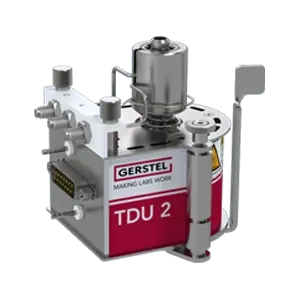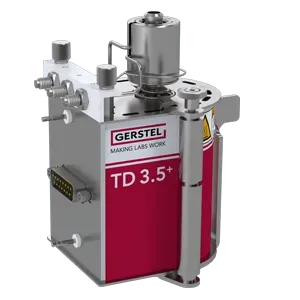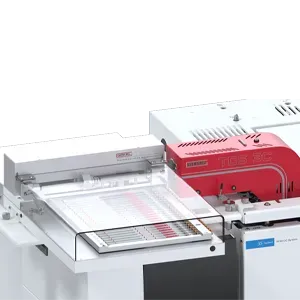
Thermal desorption - Thermal extraction
Comprehensive and flexible analysis
For many types of analyses, a key objective is to determine both known (target) and unknown (non-target) analytes, for example, to help safeguard product quality and acceptance or to monitor material emissions. For volatile and semi-volatile organic compounds (VOCs and SVOCs) the analysis is ideally performed without using potentially toxic solvents and without analyte loss or degradation. In many such cases, thermal desorption is the technique of choice.
Whether a non-target analysis is successful largely depends on the sample handling and analysis technique used, but it also requires choosing a suitable analytical instrument for the task. Ideally, it should be flexible enough to allow fast adaptation to new and unexpected challenges, for example, whenever a critical product quality issue emerges that must be resolved quickly. Flexibility is best achieved in systems that are modular and offer a wide range of techniques. Whenever non-target (unknown) compounds must be identified, the ability to cover a wide range of chemical compounds without discrimination or loss is critically important. As an example, off-odors are frequently caused by compounds with extremely low odor thresholds. These compounds are easily detected by the human nose but require extreme analyte concentration either by pre-extraction or by the analytical instrument/technique used for the analysis to be definitively identified by a mass spectrometer. To top off the wish list, the analytical system must be reliable and rugged, and its operation user friendly. When it comes to the determination of VOCs, thermal desorption (TD) in combination with GC-MS has emerged as the technique of choice – and for obvious reasons: No need for potentially toxic solvents that dilute the sample and are expensive to both purchase and to dispose of. GERSTEL has provided instruments and systems for solvent free, highly sensitive and environmentally friendly thermal desorption analysis for more than 30 years and is a recognized global leader in this field.
A deeper look at TD technology and instrumentation
Thermal desorption instruments generally consist of four core elements: An autosampler, a thermal desorber, a flow path, and a focusing trap – not necessarily in that order.
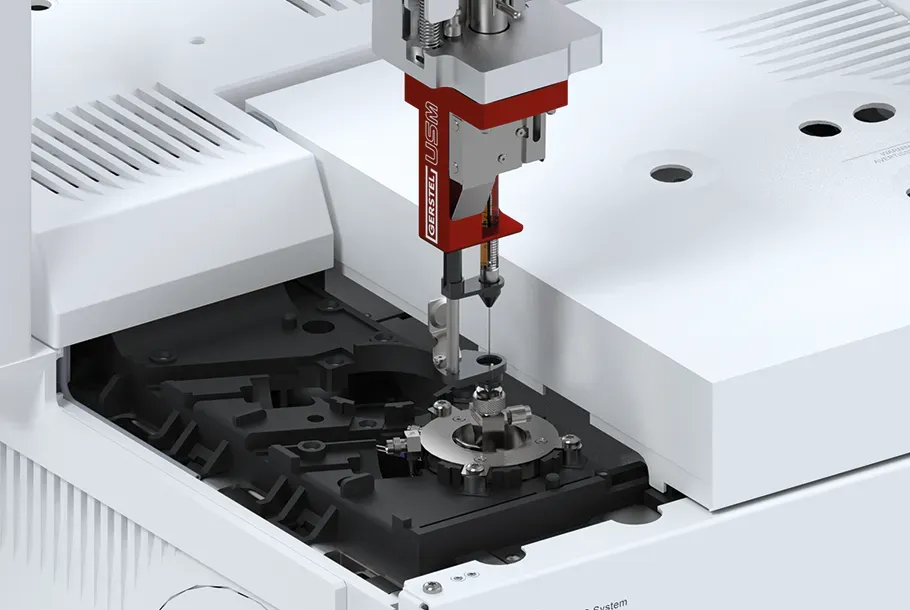
The heart of every GERSTEL thermal desorber has always been the Cooled Injection System (CIS), a PTV type GC inlet used to concentrate and transfer analytes efficiently and without discrimination or loss. The CIS was originally developed for GC analysis to perform discrimination-free liquid injection at low temperature followed by programmed temperature vaporization. This approach was also widely used for large volume injection (LVI) for improved detection limits. In thermal desorption systems, the CIS is used as a cold trap, concentrating analytes before transferring them to the GC column in a sharp band for optimal separation and compound detection. Ideally, analyte focusing is performed at low temperatures without having to rely on sorbents. Sorbent traps can cause chemical reactions and analyte degradation of more labile compounds and should be avoided when an application requires the identification of non-targeted (unknown) compounds.
True TrapTM
GERSTEL’s True TrapTM technology is applied when the CIS is cooled with liquid nitrogen to -180 °C and only inert glass beads are used to enhance compound trapping. This is the ideal way to trap even the most volatile compounds and obtain a “true” profile of the analytes in a sample. This single trap configuration can be used for all applications and does not require the CIS to be reconfigured as sample types change. Since the technology does not rely on sorbent material, it eliminates the challenge of selecting the “right” sorbent which requires the use of standards and a cumbersome trial and error approach to ensure the compounds of interest are being trapped without significant loss or degradation.
There are other features that contribute to making the CIS the ideal cold trap. The slender design and short analyte flow path free of valves and active surfaces minimizes the risk of sample-to-sample carry-over and analyte loss. The user defined temperature and programmed temperature vaporization during analyte release enable the simplest possible operation. In some cases, the use of True TrapTM technology may not be necessary. For example, if the compounds to be determined are known (target analysis) or the compound type and boiling point range is well defined, other cooling options can be used. Cooling with carbon dioxide provides trap temperatures to -70 °C, the cryogen-free Cryostatic Cooling Device (CCD) provides trap temperatures as low as – 40 °C and Peltier Cooling goes to +10 °C. These options provide trapping temperatures that allows the TD system to be optimally configured for any application or laboratory requirement.
Flow path
When selecting your TD instrument, always consider the analyte flow path between the thermal desorber, the trap and the GC column. It should have low dead volume while being inert, rugged, and leak free. As always “the best transfer line is no transfer line”, since void volumes and active surfaces are eliminated for best possible analyte recovery and quality of GC separation. These requirements were developed to perfection in the TDU and TD 3.5+ by connecting the modules directly using the “liner in liner” approach and having the GC column inserted directly into the CIS trap liner. Connecting the elements of a thermal desorption system in such a compact manner eliminates multiple elements from the analyte flow path: No O-rings; no valves; no polymer stator or rotor/slider; no connecting tubing; no protective PTFE filters used to protect the valves. Protect the valves? Yes, valves must be protected from sorbent particles using PTFE filters in the analyte flow path to avoid surface scratching and leaks. Such instruments may be specified to a maximum desorption temperature of 400 °C, but the PTFE filters will melt even at temperatures well below that level, so best not to try it. The compact liner-in-liner flow-path eliminates complexity and provides the inertness required for good recovery across the volatility range even for more labile compounds.
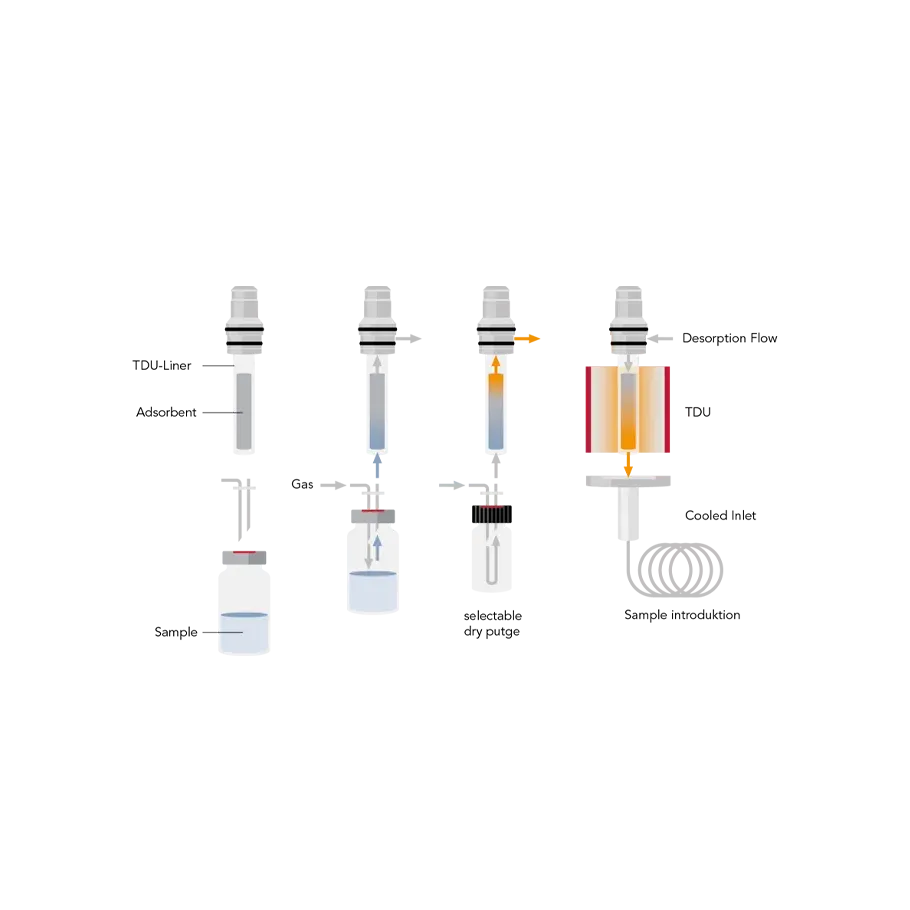
Liquid samples or standards can be injected directly into the TDU and TD 3.5+ or introduced using µ-vials placed in the TD tube. The CIS can also be used for liquid injection, for example during GC-MS method development, when validating GC-MS performance using a liquid standard, or when performing trouble shooting. Further, the Tube Spiking System (TSS) module enables the MultiPurpose Sampler (MPS) used for the TDU 2 and TD 3.5+ to spike sorbent tubes with liquid standards as required by various air monitoring methods.
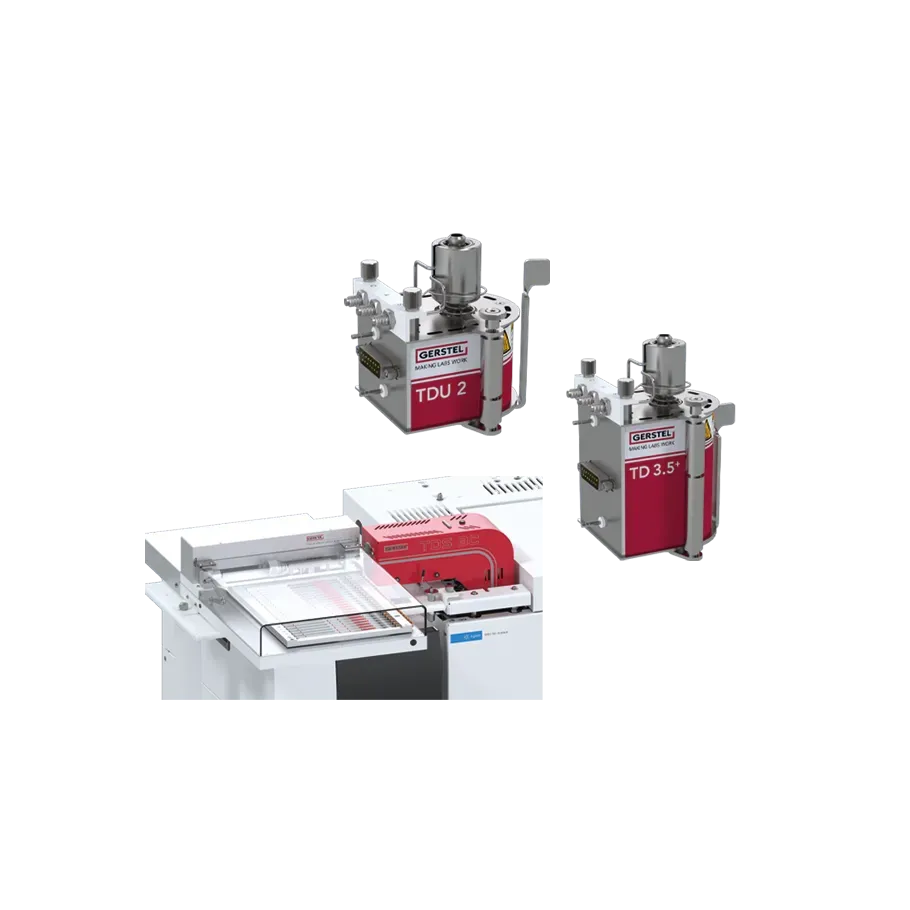
Choice of thermal desorber
The CIS can be combined with any of the three different GERSTEL TD systems: Thermal Desorption Unit (TDU 2), Thermal Desorber 3.5+ (TD 3.5+), and Thermal Desorption System (TDS 3). Sample introduction is performed by inserting an TD tube best suited for the sample type (gas, liquid or solid) or preliminary extraction technique (GERSTEL Twister® or Thin Film SPME). During primary (tube) desorption, a high carrier gas flow and programmed temperature desorption should be used to reduce the risk of analyte overheating and decomposition. The GERSTEL TD systems, uniquely, use this approach. To meet all requirements, GERSTEL TD systems support use of three of the most widely used tube dimensions world-wide: 2.4” (60 mm), 3.5” (89 mm) and 7” (179 mm) long. The most suitable instrument is selected based on the analysis requirements.
As to choosing the tube size, we offer the following recommendations: 2.4” TDU tubes are especially well suited for thermal desorption of the GERSTEL Twister® and for Thin Film SPME devices. The 3.5” (1/4“OD) tubes used in the TD 3.5+ enable the use of significantly more sorbent providing larger sample capacity resulting in improved recovery during whole air sampling or, for example, when performing Dynamic Headspace sampling (DHS) of very volatile species.
Autosampler
All GERSTEL TD systems can be operated with highly efficient autosamplers. For the TDU 2 and TD 3.5+, the dedicated MultiPurpose Sampler MPS TD version can be used, or the MPS robotic Smart series is available if a fully flexible configuration is required. Further, the Universal basic system offers 10 techniques including TD and the Universal advanced system is scalable up to 35 techniques in one system. These range from liquid injection through headspace and dynamic headspace, SPME and TF-SPME as well as Stir Bar Sorptive Extraction using the GERSTEL Twister®.
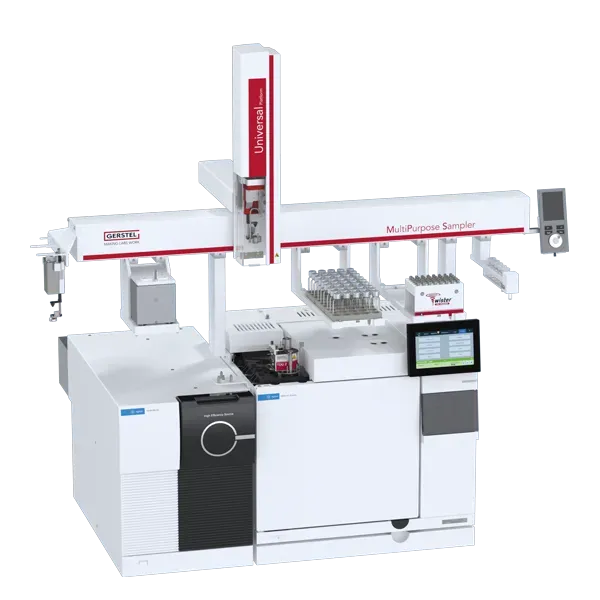
Conclusion
Users that need to perform non-target analysis as well as determination of labile or adsorptive compounds as part of their daily tasks are well equipped to meet their challenges with a GERSTEL TD solution. Our powerful TD platforms further help to maximize the use and performance of powerful mass spectrometers such as TOF-MS.
The simplicity and ruggedness of the TD systems enable routine quantitative determination of a wide range of VOCs and SVOCs. Whether you are looking for a few compounds in a packaging sample, a wide range of analytes in air, a full aroma profile of a beverage, or a critical off-odor in your product, the GERSTEL TD technology will quickly provide the results you need.
GERSTEL Thermal Desorption
In this video, we provide you with exciting insights into the use of Thermal Desorption Systems
Be inspired and find out more!

